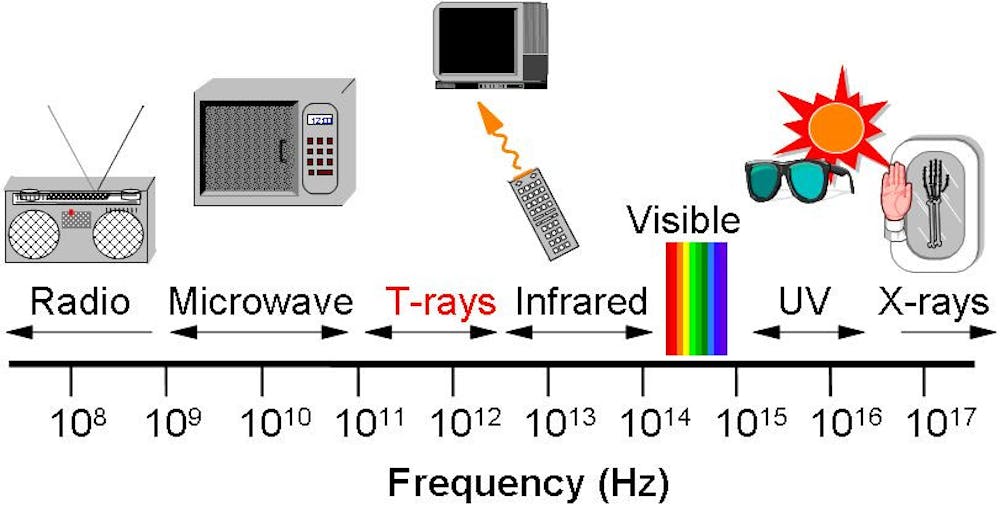Your memes may be capable of downloading even faster — although you might have to wait a generation or two for the technology.
The Federal Communications Commission has approved the University as the first testing site for wireless communication using ultra-fast terahertz frequencies, which could bring in a new era of rapid communication.
Consumers currently only use Terahertz waves, sometimes called T-rays, very rarely in technological applications. Neither a high-frequency wave like visible light nor a low-frequency wave like microwaves, T-rays don’t have many obvious applications. Though they cannot be detected by the human eye, they are not a small enough wavelength to easily pass data through large objects.
Today, data on a 4G device is transmitted using gigahertz waves, which have a smaller frequency than Terahertz waves and cannot transmit as much data. Data speeds are currently limited to a maximum of around 400 megabytes per second.
As more everyday objects are connected to the web and take up bandwidth, a new way to transmit data is needed, said Professor Michael Shur of Rensselaer Polytechnic Institute, a researcher in the field. Terahertz technology could be used to facilitate communications between your computer, fridge, phone, thermostat and any other household appliances.
Daniel Mittleman, professor of engineering and the principal investigator for Brown’s research lab on Terahertz, imagines that in the future, someone might be able to approach a kiosk equipped with terahertz technology where a user could download an 8K movie in a second, he said.
Mittleman is “one of the internationally recognized leaders in terahertz research,” Shur said.
In an experiment using a terahertz multiplexer, which sends multiple signals along a single channel, researchers in Mittleman’s lab were able to transmit data at around 50 gigabytes per second, roughly 120 times faster than current speeds.
At first, Mittleman was not sure his request to test the waves on campus would be successful. “We wanted to push the FCC to think about it. People in Japan, Europe and China are already testing these frequencies, and we wanted the FCC to respond,” Mittleman said.
Mittleman’s group will begin outdoor tests this fall, sending data wirelessly in various locations around campus. While the experiments will begin in good weather, the group hopes to test different weather conditions and situations to see how the terahertz waves are affected, Mittleman said.
While some in the field have said that terahertz communication is impossible in the rain due to the way it interacts with the waves, Mittleman thinks otherwise. “We are going to prove them wrong,” he said.
Mittleman’s research group continues to publish work around terahertz waves, focusing on areas such as terahertz radiation and spectroscopy to study nano-materials.





